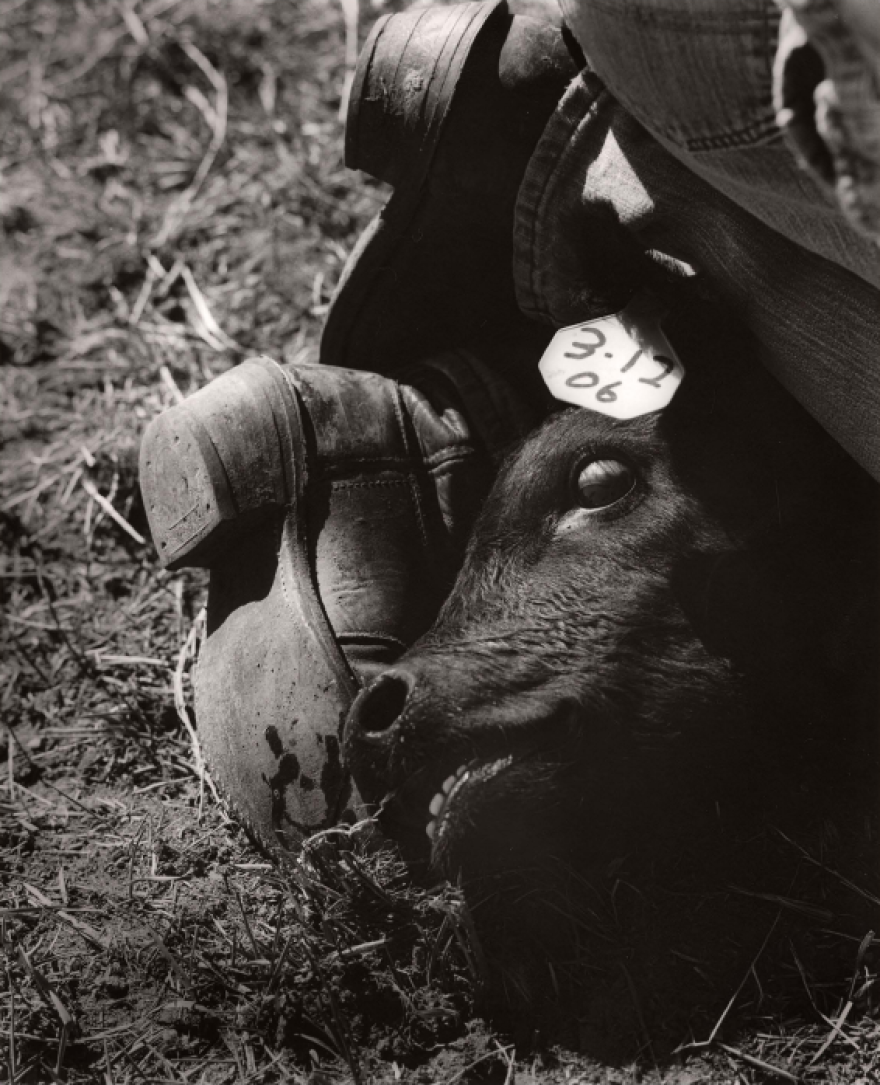Photographer Michael Crouser spent 10 years taking pictures of northwestern Colorado mountain ranchers and the work they do. The photos, and some of their stories, have just been published in “Mountain Ranch,” and some of them are also on exhibit in New York City.
Crouser (@MichaelCrouser) joins Here & Now‘s Peter O’Dowd to talk about the book.
Interview Highlights
On Crouser’s photography appearing quintessentially western
“It absolutely does, but it’s also very much Colorado in that it’s in the mountains, and it was pointed out to me early on that that’s a different kind of ranching, and that’s, in the end, why I called the book Mountain Ranch, because I wanted to show that kind of place and that kind of ranching, and also display some of the landscape that makes it so.”
On the people he photographed
“Well the people are of that place in every way. A lot of the older people that I interviewed and photographed were actually born on the same piece of land, or next door to where they’re living now and to where they worked their whole lives, and then retired. They’re wonderful people, everybody that I came in contact with was kind to me and friendly and willing, even if they were somewhat shy, they were willing and interested in having me there to look at and document their way of life.”
On his most admired work: portraits of Madison George
“Madison George was a daughter of one of the families from Yampa, Colorado, that I photographed, and I made a portrait of her and some other young people on one of my first visits out there in 2006. And the portrait that I made of her just stood out as one that people always wanted to ask about, always wanted to talk about it. It’s something about the look on her face, the gaze into the camera was somehow arresting and intriguing enough that people always stopped at it and asked about it. And, when I finished the project I realized that I’d been photographing Madison and some other people for 10 full years, and kind of in recognition and honor of that portrait and of her, I asked if I could make one more portrait of her to finish off the project. And so the last picture I made for the book was a portrait that was an attempt to emulate the original one of Madison.”
On the timelessness of his photographs
“It’s not really an attempt to make old-looking photographs as much as it is to take photographs that don’t really reference popular culture, if you can see the difference I’m trying to make there. I really don’t include any evidence of popular culture — no tennis shoes or sunglasses or baseball hats or cars or architecture or typography. It’s all just the traditional elements of traditional lives, and I really feel like, you know, one picture can contain that, but if you have a whole series like that, by the end of it you feel as though you’ve had a certain type of experience, I believe.”
On the honest grittiness of his photographs
“For one thing, it shows that I wasn’t really trying to just romanticize this whole thing. It’s a really rough and tough, earthy kind of subculture, and I wanted to show that that was true. There is a lot of death in their life, and I wanted to exhibit some of that just to give it a sense of truth.
“I also do have kind of an innate fascination with the rougher elements of their lives, so for me, it was not something I had to talk myself into to photograph the mud and blood and spit, the whole thing. I spent a lot of days sitting down in cow manure and kneeling in it. It’s just part of the deal and these people finish their days covered with all such things.”
On ranch life being equally gritty for animals
“Yeah, especially during branding, that’s a tough day for those calves. A lot of their life is calm and pastoral, but they have some distressing elements to their lives, as well, and I wanted to show that, too. I wasn’t trying to make any kind of a point about it being a difficult world for animals or people, but it’s just what I saw, and I thought it was important to relay as much truth as possible.”
On the future of ranching as a way of life
“There were a number of ways in which people expressed to me that ranching was a disappearing way of life, and one of them was this idea that inheritance taxes would make it impossible for the next generation to just simply take over. … There’s other reasons why people feel that their way of life is not long for this world, including other inheritance issues like splitting up a ranch among a whole generation of people, which makes it impossible to continue, or the idea that a young person could not be a new rancher because where would they ever get the money for land and stock and machinery and such. But also, there’s the development of the land around them, which takes away land available for cattle ranching. The development of land for residences and recreational land, it’s something that really sticks in the craw of these ranchers, this idea that their land is going away, and it kind of sets up a conflict with what they call rich people. You know, rich people coming in and buying up a ranch, a whole ranch, that had been used for raising cattle, and simply using it for recreation two or three times a year.”
More Photos From ‘Mountain Ranch’
Photos © 2017 by Michael Crouser; from the book Mountain Ranch, © 2017 by the University of Texas Press.
Copyright 2021 NPR. To see more, visit https://www.npr.org.










